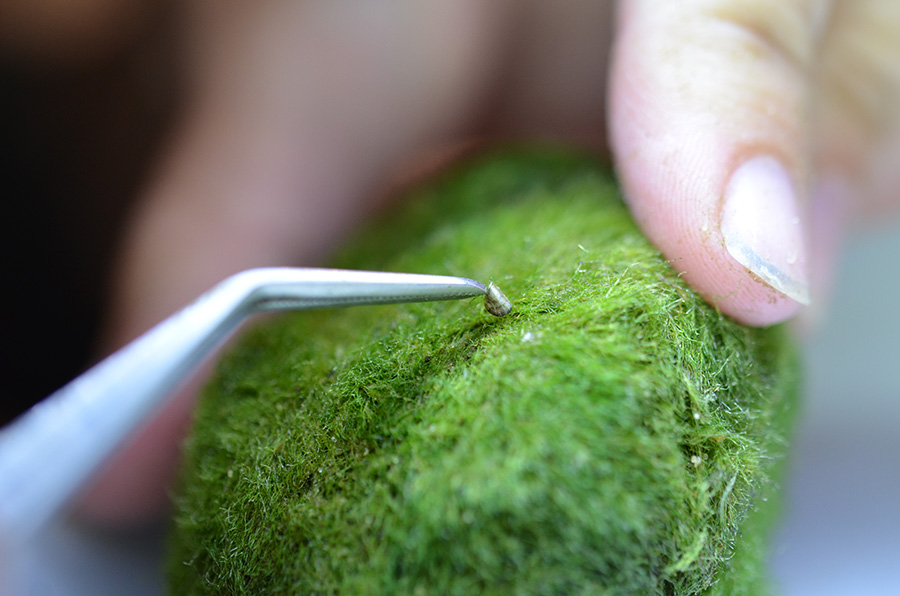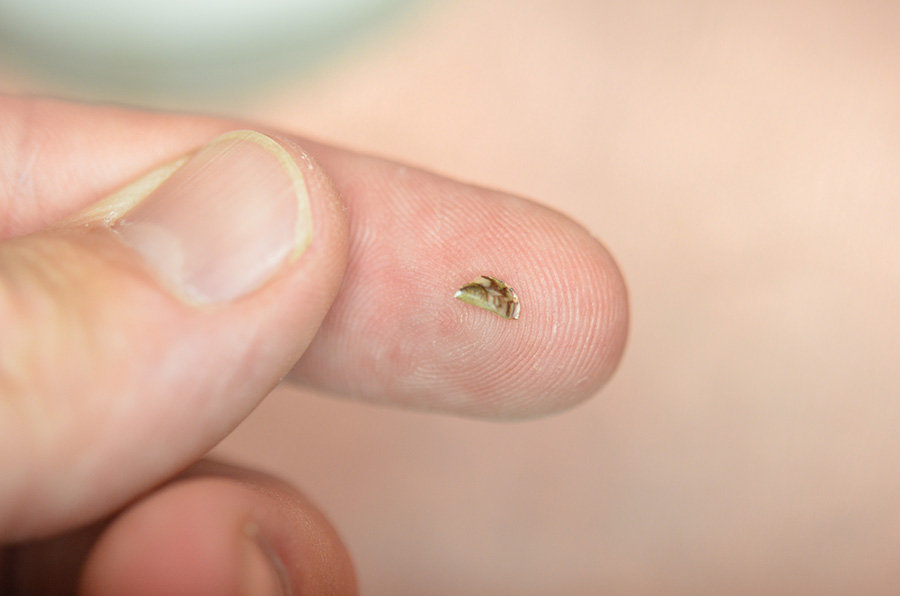Environmental pest not found in Australia.
About zebra mussel
Zebra mussel is a small freshwater mussel that has spread from its native range in eastern Europe to North America and parts of western Europe. The pest can spread in large numbers in freshwater lakes and ecosystems.
Once established in a lake or river, they can impact native species and water quality. They also damage infrastructure by attaching to boats, pipes and machinery. It is a high-risk species on the National Priority List of Exotic Environmental Pests.
The zebra mussels are very small, usually less than 2cm long. They have brown or black zigzag stripes across the pale shells and look like a small triangle.
How it spreads
Zebra mussel is a hitchhiker pest. It could arrive in Australia attached to imported freshwater aquarium materials, such as marimo moss balls and freshwater plants. They can then spread into the environment through the release or movement of water from aquariums or ponds.
How to check your aquarium
You can help stop zebra mussel and other exotic aquatic pests from becoming established in Australia.
If you have purchased moss balls, please check them, and your aquarium for zebra mussel. To check a moss ball, remove it from the tank and use a torch and magnifying glass to closely inspect it. Look for:
- small, hard, shell-like bumps from 1–50mm, but usually fingernail sized
- light brown or striped shells
- any unusual roughness or objects attached to the surface of the moss ball.
Check your aquarium by shining a torch into the tank. Look for zebra mussels attached to surfaces or hiding in corners, especially around:
- filter intake and outflow
- gravel, rocks and substrate
- decorations, plants and slow-moving animals such as crayfish, snails and turtles.


Images courtesy of Washington Department of Fish and Wildlife
If you find zebra mussel
If you think you have zebra mussels in your tank, take clear photos of the zebra mussel inside or outside the aquarium. Make sure you return your moss ball to the tank, do not throw them out.
Do not empty your tank or dispose of any animals, plants, equipment and water until you have advice from your local aquatic biosecurity team.
Immediately contact your local state or territory aquatic biosecurity team. They will confirm if you have zebra mussel and will help you manage the pest.
Alternatively, you can call the SEE. SECURE. REPORT hotline on 1800 798 636 or use the online form.
Factsheet
Zebra mussel (Dreissena polymorpha) factsheet
If you have difficulty accessing these files, contact us for help.
Biosecurity advice
Invasive or high-risk plants and animals can be sold, sometimes in breach of Australia’s biosecurity laws.
Aquarium owners
Know which species you are purchasing and confirm it is not an invasive or prohibited species.
When purchasing new animals and plants, inspect them carefully for hitchhiker pests.
Regularly check your aquarium substrates, fixtures, and animals and plants for hitchhiker pests, especially if you have recently introduced new stock.
Never dump contents from your aquarium or pond into waterways. This includes aquarium water and unwanted aquatic animals and plants.
Invasive or high-risk plants and animals can be sold, sometimes in breach of Australia’s biosecurity laws. Only buy aquatic animals and plants from sellers who can explain where they source their stock and follow our biosecurity laws.
If you have any doubts about something you see for sale, contact the Department of Agriculture, Fisheries and Forestry or your state or territory aquatic biosecurity team for advice.
Boaters, fishers and divers
It is possible for zebra mussels to come into Australia on dirty fishing equipment. If you have travelled to overseas areas impacted by zebra mussels, please declare this on your incoming passenger card.
Do not move any aquatic animals, plants, or water between waterways.
Do not use invasive species as bait.
When boating, use the “check, clean, dry” method:
- Check wheel arches on trailers, boat hulls and propellers, fishing tackle and footwear for bait and debris.
- Keep your boats, trailers, wetsuits, fishing rods and equipment clean. Use soapy water.
- Allow your boat and trailer, fishing rods and other equipment to dry completely before using them at another location.
If you see anything unusual, contact your state or territory aquatic biosecurity team for advice.
Reporting contacts
See. Secure. Report hotline: 1800 798 636
Webform: https://www.agriculture.gov.au/biosecurity-trade/pests-diseases-weeds/report
Phone: Emergency Animal Disease Hotline 1800 675 888
Web: https://www.act.gov.au/environment/animals-and-plants/biosecurity
Email: ACTbiosecurity@act.gov.au
Phone: Emergency Animal Disease Hotline 1800 675 888
Web form: https://forms.bfs.dpi.nsw.gov.au/forms/9247
Email: aquatic.biosecurity@dpi.nsw.gov.au
Contact your local fisheries office.
Phone: 0413 381 094
Email: aquaticbiosecurity@nt.gov.au
Phone: Biosecurity Queensland 13 25 23
Web form: https://www.dpi.qld.gov.au/contact/report-a-biosecurity-pest-or-disease
Phone: 1300 368 550
Web: https://nre.tas.gov.au/biosecurity-tasmania/aquatic-pests-and-diseases
Phone: 136 186
Web: https://vic.gov.au/marine-pests
Web form: https://agriculture.vic.gov.au/biosecurity/marine-pests/report-a-marine-pest-sighting
Phone: FishWatch 1800 815 507
Web: https://www.dpird.wa.gov.au/businesses/biosecurity/aquatic-biosecurity/
Email: aquatic.biosecurity@dpird.wa.gov.au
Contact your local DPIRD office.
Further information
Zebra mussel | National Introduced Marine Pest Information System
